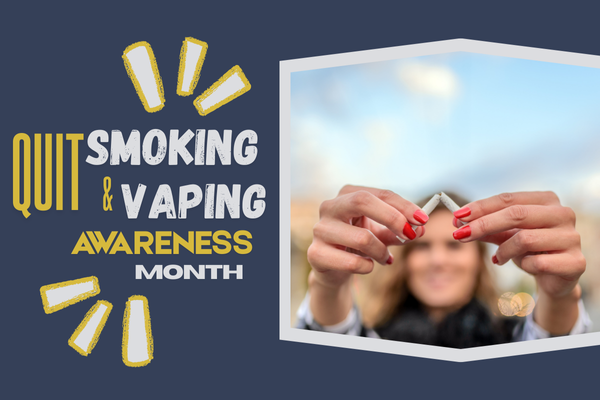November is Quit Smoking/Vaping Awareness Month, a crucial time to reflect on the impact of smoking and vaping on our health and well-being. As a prevention education-focused organization at Drive to Save Lives, we are dedicated to empowering students and educators with the knowledge and tools they need to make informed decisions, set meaningful goals, and raise awareness about the dangers of smoking and vaping.
Understanding the Risks
Smoking and vaping can have serious health consequences, including lung disease, heart problems, and addiction. It’s important to understand that these habits can start as a seemingly harmless experiment but quickly turn into a lifelong struggle.
To emphasize the importance of quitting smoking and vaping, consider these eye-opening statistics from North America: In 2021, 11.0% of U.S. adults aged 18-24 were current e-cigarette users, with 14.1% of high school students reporting e-cigarette use in 2022. Alarmingly, about 1 in 5 high school students in the U.S. have reported using tobacco products, and e-cigarettes are the most commonly used tobacco product among teens, with about 20% of high school students reporting use.
Peer influence plays a crucial role, as teens are more likely to start smoking if their friends do. By staying smoke-free, teens can set a positive example and help reduce smoking rates among their peers.
On a positive note, the rate of daily smoking among U.S. adults has steadily declined from 15.5% in 2016 to 13.7% in 2018. However, vaping remains prevalent, with 4.5% of U.S. adults aged 18 and over being current e-cigarette users in 2021. By being aware of the risks, you can make better choices for your future.
Pulse on Prevention for Educators
Organizing professional development workshops is an excellent strategy to educate teachers about the latest research on smoking and vaping and provide them with resources and strategies to integrate this information into their curriculum.
Encouraging teachers to incorporate discussions about the risks of smoking and vaping into their lesson plans—whether in science classes discussing health effects or social studies classes exploring societal impact—can make a big difference. Additionally, teachers can assign interactive projects that require students to research and present on the dangers of smoking and vaping, fostering creativity through posters, essays, or multimedia presentations.
Inviting healthcare professionals or former smokers to present at school, with teachers helping coordinate these events and preparing students with questions, can have a powerful impact. Personal stories can be powerful motivators for others.
Supporting teachers in setting up peer education programs allows students to learn from and teach each other about the risks associated with smoking and vaping. Teachers can also sponsor or support health and wellness clubs that focus on promoting a smoke-free lifestyle, organizing events, creating and sharing awareness campaigns like the Great American Smokeout on the third Thursday of November, and providing support for students trying to quit. Collaborating with parents ensures the message about the dangers of smoking and vaping is reinforced at home, whether through sending home informational pamphlets or hosting joint parent-student workshops.
Let’s work together to ensure that our schools are places where students can learn, grow, and thrive without the risks associated with smoking and vaping. If you have any questions or need additional resources, please reach out to us. We’re here to support you every step of the way!
Feel free to share this blog post with your friends and classmates. Together, we can make a difference!

